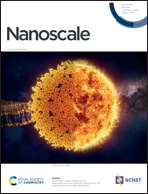A novel atomic removal model for chemical mechanical polishing using developed mesoporous shell/core abrasives based on molecular dynamics†
Abstract
To improve polishing performance and reduce the environmental pollution of chemical mechanical polishing (CMP) tests, mesoporous shell/core silica abrasives were prepared, and a novel green CMP slurry was developed, including sorbitol, hydrogen peroxide and sodium carbonate. Prior to CMP, fused silica was roughly polished with ceria slurry. Using developed mesoporous abrasives, surface roughness Sa is reduced from 0.347 to 0.253 nm for a scanning area of 200 × 200 μm2, and the material removal rate (MRR) is increased from 70 to 127 nm min−1, compared with traditional solid abrasives. Based on molecular dynamics (MD) simulations, a novel atomic removal model is proposed for mesoporous abrasives through the immediate elastic recovery of atoms. MD simulations suggest that the formation of convex peaks and pits was inhibited by the mesoporous structure, promoting uniform distribution of surface atoms and atomic removal. This is different from a conventional simple increase of polishing times. In addition, more bridge bonds of Si–O–Si and a lower average Si–O bond order are produced in fused silica samples due to their mesoporous structure, contributing to a higher MRR.



 Please wait while we load your content...
Please wait while we load your content...